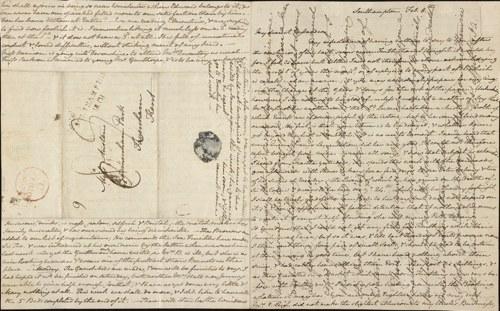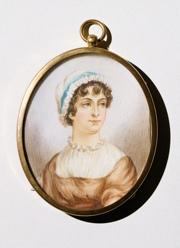I met a friend for lunch the other day at The Morgan Library. In honor of their Jane Austen exhibit, they are serving a Regency lunch. Whenever I hear the word Regency, I think not of Jane Austen, but of Dickens’s Old Mr. Turveydrop, celebrated everywhere for his Deportment, who named his son Prince. I don’t know if Old Mr. Turveydrop would have approved, but we thought it was a delicious Regency lunch—Poached Atlantic Salmon, Fricassee of Macomber Turnips & Mushrooms, Mustard Greens, Baked Apple Cobbler—though what exactly about the menu qualified as Regency is somewhat obscure. The turnips? I have never eaten more delicious turnips. I happily imagined Jane Austen eating delicate, sweet Macomber turnips, too. But at home, after a little on-line research, I came to realize how unlikely it is that she did—Macomber turnips seem to be a cross breed of radishes and rutabagas developed by the two Macomber brothers in Westport, Massachussetts in 1876.
Here is what Virgina Woolf’s father, Leslie Stephen, said about Jane Austen in 1876, the year the Macomber turnip was born:
I never, for example, knew a person thoroughly deaf to humour who did not worship Miss Austen, or, when her writings were assailed, defend themselves by saying that the assailant had no sense of humour. Miss Austen, in fact, seems to be the very type of that kind of humour which charms one large class of amiable persons; and Austenolatry is perhaps the most intolerant and dogmatic of literary creeds. To deny Miss Austen’s marvelous literary skill would be simply to convict oneself of the grossest stupidity. It is probable, however, that as much skill may have been employed in painting a bit of old china as in one of Raphael’s masterpieces. We do not therefore say that it possesses equal merit.
(And here is the fantastic collection of criticism about Jane Austen where I found it.)
I particularly like Stephen’s term Austenolatry. I think you can date this latest wave of Austenolatry to 1995 when Clueless, the brilliant film adaptation of Emma, came out. Emma is my favorite Jane Austen novel, one of my favorite novels period, a novel about intelligence outsmarting itself, about a complicated, nuanced, irresistible heroine who does everything wrong. I worship at the Austenolatry shrine in general, but even so, I was not prepared for how deeply moved I was by the Morgan’s exhibit.
There, among a collection of prints from Austen’s time, of illustrations from her books, early editions, a rough copy of her first novel, Susan, with corrections and excisions squeezed in between the narrow lines of exquisite handwriting, were several of her letters.

(Morgan Library & Museum)
And though I was ready to be overwhelmed by seeing some of the letters by one of the greatest novelists in history written in her own hand, I didn’t anticipate how intimate an experience it would be.
Of course we think we know a writer through that writer’s works: reading a novel is like a whispered conversation. And of course, simultaneously, we know that we don’t know the real writer at all. In the case of Jane Austen, whose relatives began protecting the myth very quickly after her death and even before it, we never will.
But the letters—they were such wonderfully quotidian, idiosyncratic, exuberant, dilatory, unstructured glimpses. And glimpses they were. For most of the letters just one side of the creased paper crowded with handwriting was displayed. Somehow, this seemed only to add to the sense that these were moments of a life into which we were getting a flash of insight.
In a 1799 letter to her sister Cassandra, Austen wrote:
My cloak is come home and here follows the pattern of its’ lace—if you do not think it wide enough, I can give 3 d. a yard more for yours, & not go beyond the two Guineas, for my cloak altogether does not cost quite two pounds. … I saw some Gauzes in a shop in Bath Street yesterday at only four s. a yard , but they were not as good or so pretty as mine.—Flowers are very much worn, & Fruit is still more the thing.—Eliz: has a bunch of Strawberries, & I have seen Grapes, Cherries, Plumbs & Apricots—There are likewise Almonds & raisins, french plumbs & Tamarinds at the Grocers, but I have never seen any of them in hats.
In another letter she gaily comments on a dance, listing her partners—“the two St. Johns, Hooper Holder—and very prodigious—Mr. Matthew, with whom I called the last, & whom I liked the best of my little stock.”—then goes on to describe the other ladies: “There were very few Beauties, & such as there were, were not very handsome.” My favorite part is the picture of a Mrs. Blount—“the same broad face, diamond bandeau, white shoes, pink husband, & fat neck.”
Advertisement
There is something wonderfully spontaneous about these letters—they are full of fun and gossip. The sense of artless immediacy makes it all the more clear how very artful Austen was in creating the immediacy in her novels. The letters are framed: yellowed sheets of paper creased where Austen had folded them into square envelopes. Post scripts are tossed in above the address, “crossed” lines wriggle sideways over other lines in order to say as much as possible yet save paper and postage, the way we used to speak as quickly as we could, long ago in the days of Bell telephone, on our 3-minute long distance calls.
There is a letter from Edmund Wilson urging Nabokov to include Jane Austen in his Masters of European Fiction course (he did), although Wilson weirdly thought Mansfield Park her masterpiece. And then, oddly, wonderfully, there is Kipling. Instead of the term Austenolatry, Kipling’s word is Janeite. There in the Morgan Library in a glass case on the last page of an unlikely story by Rudyard Kipling about WWI soldiers who form a secret group of Janeites is the sentence that, for me, summed up why this exhibit exists, why Jane Austen has been the subject of Austenolatry, why we are all still such ardent Janeites (even Leslie Stephens started to appreciate her in his old age): “There’s no one to touch Jane when you’re in a tight place.”
“A Woman’s Wit: Jane Austen’s Life and Legacy” is on view at the Morgan Library and Museum until March 14.



